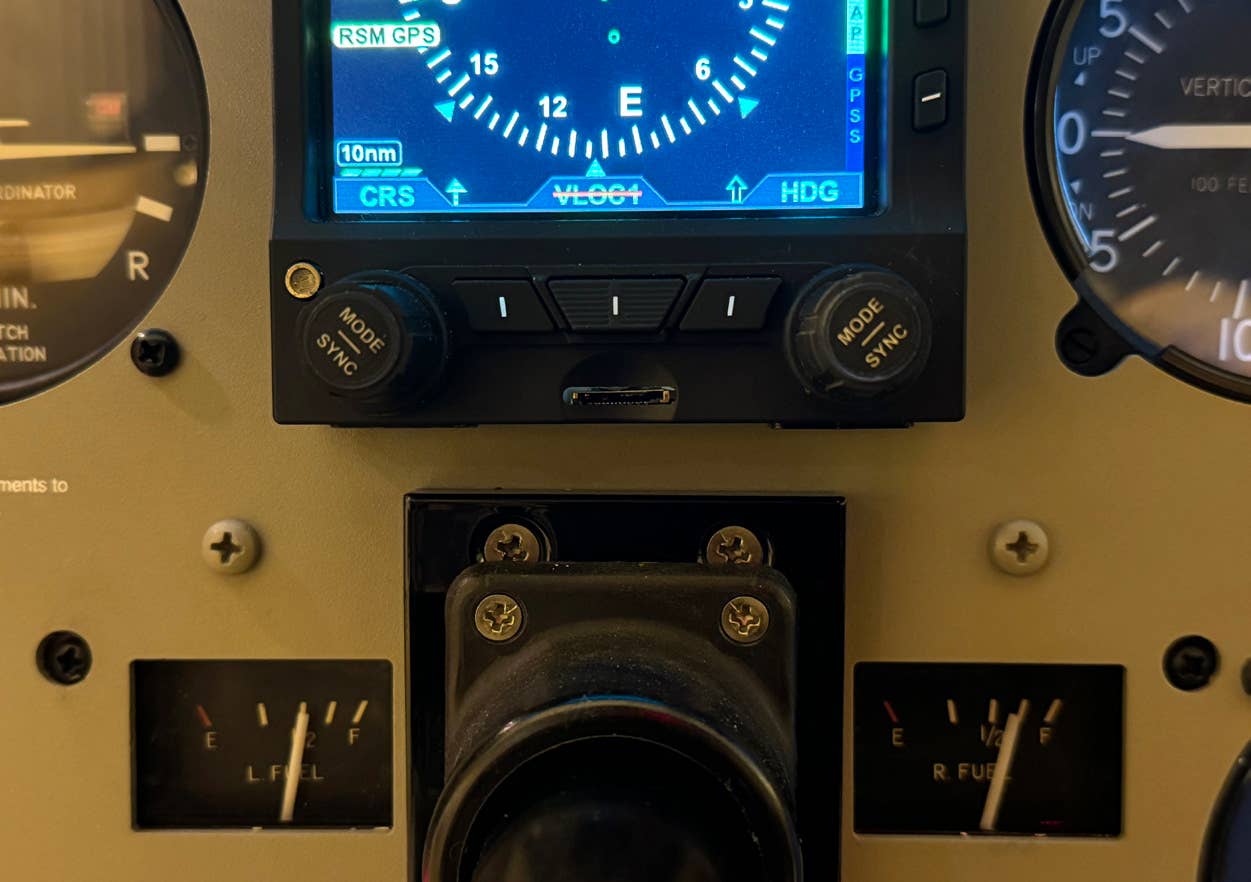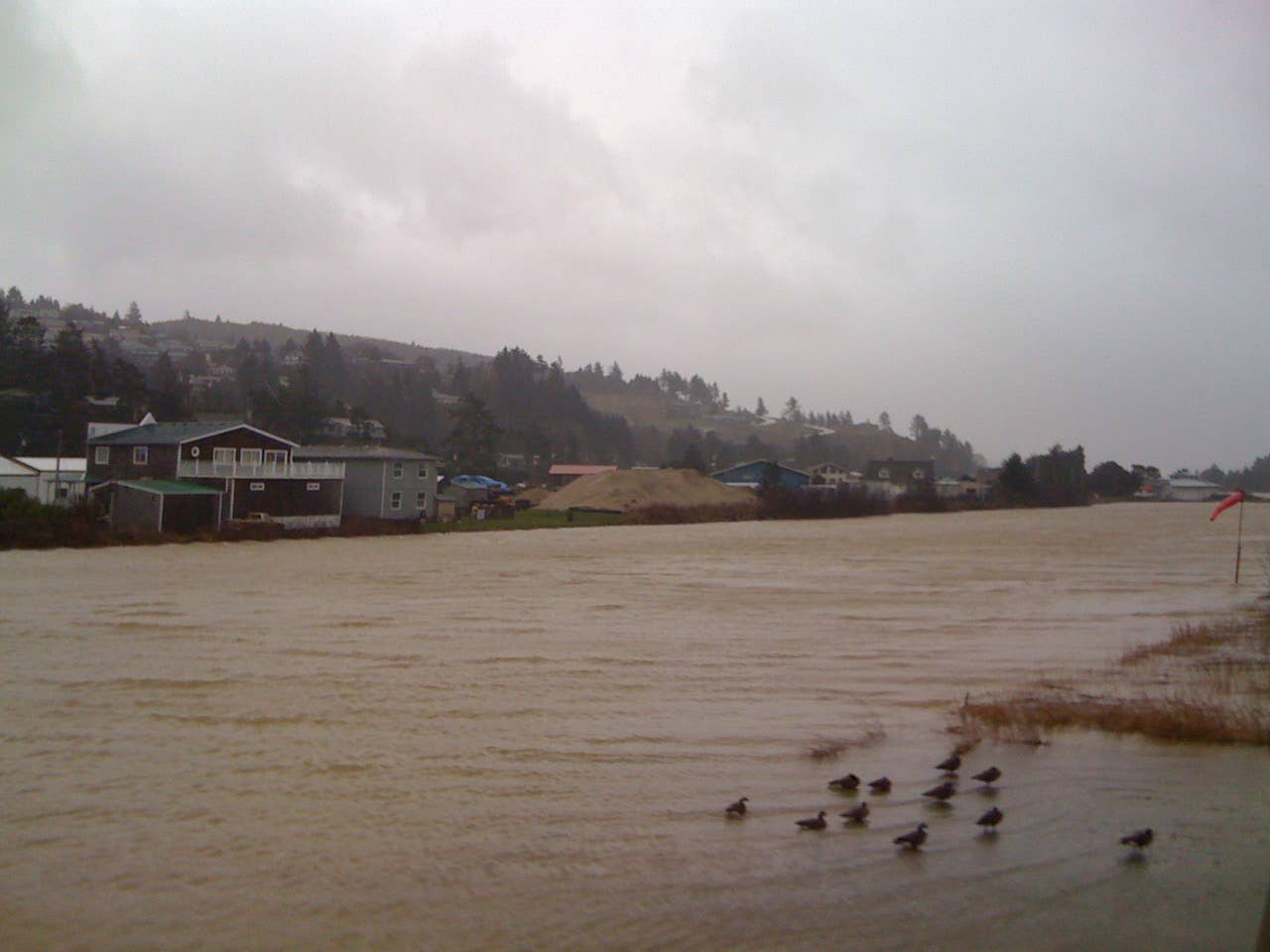
Regardless of the number and
arrangement of horizontal surfaces, putting
the CG ahead of their collective centroid
makes the airplane longitudinally stable. Piaggio Aero
Contempt and awe seldom wed, but height may make a match between them. One of the intermittent rewards of flying is the thought-provoking perspective it provides: We look down upon great cities reduced to anonymous gray smudges, or the lights of a solitary car speeding alone at midnight across a canvas of black velvet. The latter makes us reflect upon the unimagined lives of strangers — where is she going? what is he thinking about? — and the former upon the unimaginable multiplicity of such lives, each one a world, and yet each also a brief vestige upon the face of the land. Size had better not matter.
It was therefore with emotion that I learned, from my next-door neighbor, that I was to be seen on the Google "street view" of the intersection just below our houses. I looked, and indeed there I was. My face, along with a couple of license plates, was blurred from fear of lawyers, but my body, returning from the espresso joint down the street, coffee in right hand, newspapers under left arm, had been caught in a fortuitous space-time intersection with the Google camera-car, which, in spite of its resembling a rolling planetarium, I had entirely failed to notice.
This was quite exciting. Destiny had selected me — little me! — to populate Google's Earth, had deigned to make me a fixture, for the nonce, in that vast and virtual reality. It felt like an even more persuasive verification of my existence than, say, the fact that I am thinking, or at least think I am. But there was also a worry: Had I, in being granted the privilege of this fantastically improbable convergence, also used up one of my life's fated supply of improbable events? Had my one chance of winning the lottery been extinguished thereby — or, preferably, of having a total electrical failure during night IFR?
More to ruminate upon at 12,000 feet.
On the Range
"Ranges of weights and centers of gravity within which the airplane may be safely operated must be established. If a weight and center of gravity combination is allowable only within certain load distribution limits (such as spanwise) that could be inadvertently exceeded, these limits and the corresponding weight and center of gravity combinations must be established."
Thus Part 25, the FAR governing the certification of transport-category airplanes. Its precursor, Part 23, has something similar. The spanwise proviso — adding a second dimension to the usually one-dimensional idea of CG range — sounds a bit puzzling, but I suppose that what it means is that, if an airplane can carry a certain amount of fuel in its wings, it may not necessarily be permissible for it to exchange an additional fuselage load for a reduced fuel load. Such a restriction might arise, I imagine, only in an airplane that carries a great deal of fuel far out along its wingspan. Now that I think about it, my original Melmoth was such an airplane. It carried its entire 900-pound fuel supply in the wing outer panels and in tip tanks, and I suppose that, if I had put just a few gallons of fuel in the tanks and instead stuck 900 pounds of lead ingots, in addition to the usual two persons and baggage, into the fuselage, I might, pulling a few Gs, have overstressed the wing. I don't believe I ever thought about it.
What I did think about, and what every pilot is invited to think about before every flight, is the distribution of weight fore and aft. Is the airplane within its CG limits? And will it still be when it lands?
Two factors determine CG limits: stability and control; both are functions of tail size. Just as the problem for the structural engineer is to provide only the desired amount of strength and no more, the problem for the aerodynamicist is to provide no more than the required amount of tail surface, since any excess adds both weight and drag. For the fore limit, stability — meaning longitudinal stability, the ability to hold a trimmed speed and to return to it after a disturbance — is not a problem; the farther forward the CG, the more stable an airplane is. The fore limit is about control, specifically the ability of the elevator to hold the nose up.
For most airplanes, the forward end of the CG range is determined by the ability to rotate for takeoff or landing. Either case may be the critical one. A single-engine airplane with a low stabilizer and a tractor propeller may have no difficulty rotating well before reaching liftoff speed, because the tail is in the propeller slipstream and takeoffs are normally done with only partial flap. Landing then becomes the critical case, because there is little or no slipstream and full flap produces a nose-down moment that must be balanced by extra down-force at the tail.
The position of the main landing gear has a part to play. Usually the main gear is situated so that it is directly below, or just slightly behind, the most aft CG in the most nose-up ground attitude — you don't want the airplane tipping over onto its tail skid and staying there. But this means that the wheels are well behind the CG when the airplane is level, making it more difficult for the elevator to lift the nose. Canard pusher airplanes generally suffer most from this limitation; lacking the benefit of slipstream, they have to be going pretty fast before their noses will come up.
The aft limit of the CG range is set by an entirely different consideration: longitudinal stability.
The basic requirement for stability is that the CG be located some distance ahead of the aerodynamic center, or a.c., of the lifting surfaces. For a wing alone, the a.c. is at about 25 percent of chord, that is, a quarter of the way from the leading edge to the trailing edge. For a two-surface airplane, it's at a "centroid" or balance point between the wing and the tail or canard. You can get an idea of it by imagining the two surfaces — or three, as the case may be — cut out of cardboard and glued in their proper relation to something light like a balsa stick or straw. Various factors, such as mutual interferences and the different aerodynamic effectivenesses of surfaces of different sizes and shapes, shade the result, but the balance point of all the lifting surfaces is roughly their a.c.
The wording of the FAR makes it clear that, insofar as they affect stability, CG limits must be established by flight test. The basic requirement is that, above the stall and below the never-exceed speed, and with any configuration of power, flaps, landing gear and what have you, a perceptible pull force must always be required to slow an airplane and a perceptible push must be required to accelerate it.
Modern computer analysis makes it possible to predict stability quite accurately, but in the olden days (that is, more than 10 or 20 years ago) a simplifying criterion, tail volume coefficient, was often used to establish tail area. The tail volume coefficient is the ratio between two numbers. One of them is the product of the wing's area and its mean chord, the other the product of the horizontal tail area and the distance from the tail to the wing. (An analogous coefficient, with a slightly different cast of characters, exists for the vertical tail.)
Obviously (as authors discussing mathematical procedures like to say in order to dazzle and intimidate their readers) for an airplane of classic dimensions with a wing aspect ratio of 6, a tail area one-sixth of its wing area, and a tail moment arm equal to its semispan, the tail volume coefficient is 0.083. In practice, values range from half to two or three times that. Single-seaters, or tandem two-seaters (like a Cub or Champ, for instance) whose passenger sits right on the CG, have small tail volumes because their CG range is small; airplanes that require a larger CG range have larger tails. Engineers relying upon what could be called the It Worked Before method of airplane design crib a tail volume coefficient from a list of airplanes similar to the current project. Actually, with a little experience this can be done by eyeball alone; no calculations are needed.
Getting back to the idea of the centroid or balance point of the wing-tail combination, the balance point for the classic configuration just described is at about 43 percent of chord behind the a.c. of the wing — that is, at 68 percent of the wing chord. If you turn the configuration around, making a canard out of it, the centroid is at 43 percent of chord ahead of the a.c. of the wing, that is, at 18 percent of chord ahead of its leading edge. But lots of things nibble away at longitudinal stability — especially propellers located ahead of the CG — and in practice the aft CG limit of a conventionally configured airplane is seldom found even as far back as 35 percent of the mean chord.
There exists, as far as I know, no firm rule about how the CG should move with loading. Common sense would suggest that fuel burn ought not to move the CG aft, at least not very much. Minimum weight should coincide with the most forward CG, to make it easy to raise the nose for takeoff. But all the nuanced design in the world is for naught if pilots do not pay attention to weight and balance. I suspect, from watching them drive in, load up and taxi out, that many do not.

Sign-up for newsletters & special offers!
Get the latest FLYING stories & special offers delivered directly to your inbox






